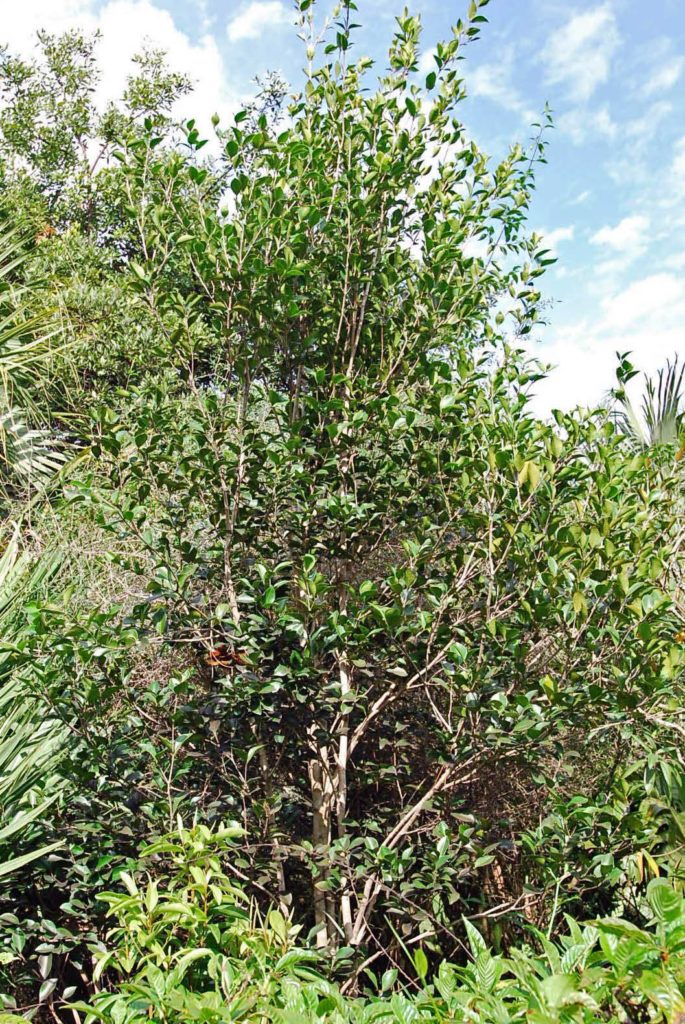
Myrtle of the River
Calyptranthes zuzygium
Myrtle of the river is another member of the guava family that produces clusters of white flowers in summer followed in early fall by half inch black berries that are favored by birds and are sweet and edible.
Although it can be clipped as a hedge, the best use is as a 10 to 25 foot small specimen tree. The growth is naturally rounded, yet taller than broad.
Found naturally in the upper Keys and parts of Dade County, Myrtle of the River survives well throughout Palm Beach County and can tolerate freezing temperatures for short periods.
Average soil, with some organic matter to retain moisture is best. Does very well during drought and can grow near the coast if protected by other vegetation.
Cardinals seem to like nesting in this shrub. When planted near your home, hawks are less likely to bother nesting birds and your dog will keep cats away. This is a combination that many birds take advantage of by placing their nest just above the height of your dog’s nose where predators from above and below feel unsafe.
This shrub can be mixed with coastal species or blended with rockland plants. In this latter case mix with Slash Pine, Tetrazygia, Pineland Privet, Saw Palmetto, Coontie, Wild Coffee, Silver Palm, Beach Creeper, Spanish Stopper, Locust Berry and other rockland species.
Like many of our trees and shrubs, Myrtle of the River may accumulate Lobate Lac Scale on its branches. This causes blackening on the leaves as the sugar syrup that the scale excretes becomes moldy. Just spray with your favorite organic pesticide labeled for scale insects and the mold will wash off in the rain.
For information on this scale insect click here, but please stay away from the imidacloprid containing pesticides that cause Colony Collapse of bees.